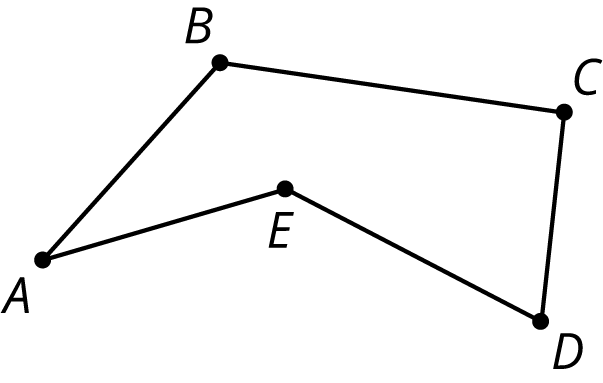Lesson 4
Making the Moves
Let’s draw and describe translations, rotations, and reflections.
4.1: Reflection Quick Image
Here is an incomplete image. Your teacher will display the completed image twice, for a few seconds each time. Your job is to complete the image on your copy.
4.2: Make That Move
Your partner will describe the image of this triangle after a certain transformation. Sketch it here.
4.3: A to B to C
Here are some figures on an isometric grid. Explore the transformation tools in the tool bar. (Directions are below the applet if you need them.)
-
Name a transformation that takes Figure A to Figure B. Name a transformation that takes Figure B to Figure C.
-
What is one sequence of transformations that takes Figure A to Figure C? Explain how you know.
Translate
- Select the Vector tool.

- Click on the original point and then the new point. You should see a vector.
- Select the Translate by Vector tool.

- Click on the figure to translate, and then click on the vector.
Rotate
- Select the Rotate around Point tool.

- Click on the figure to rotate, and then click on the center point.
- A dialog box will open. Type the angle by which to rotate and select the direction of rotation.
Reflect
- Select the Reflect about Line tool.

- Click on the figure to reflect, and then click on the line of reflection.
Experiment with some other ways to take Figure \(A\) to Figure \(C\). For example, can you do it with. . .
- No rotations?
- No reflections?
- No translations?
Summary
A move, or combination of moves, is called a transformation. When we do one or more moves in a row, we often call that a sequence of transformations. To distinguish the original figure from its image, points in the image are sometimes labeled with the same letters as the original figure, but with the symbol \(’\) attached, as in \(A’\) (pronounced “A prime”).
-
A translation can be described by two points. If a translation moves point \(A\) to point \(A’\), it moves the entire figure the same distance and direction as the distance and direction from \(A\) to \(A’\). The distance and direction of a translation can be shown by an arrow.
For example, here is a translation of quadrilateral \(ABCD\) that moves \(A\) to \(A’\).
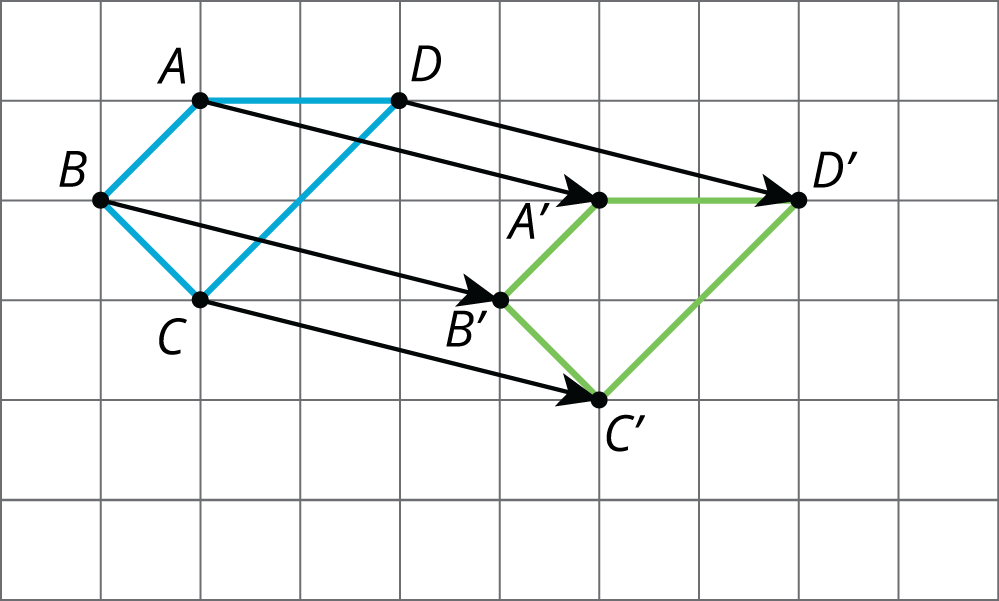
- A rotation can be described by an angle and a center. The direction of the angle can be clockwise or counterclockwise.
For example, hexagon \(ABCDEF\) is rotated \(90^\circ\) counterclockwise using center \(P\).
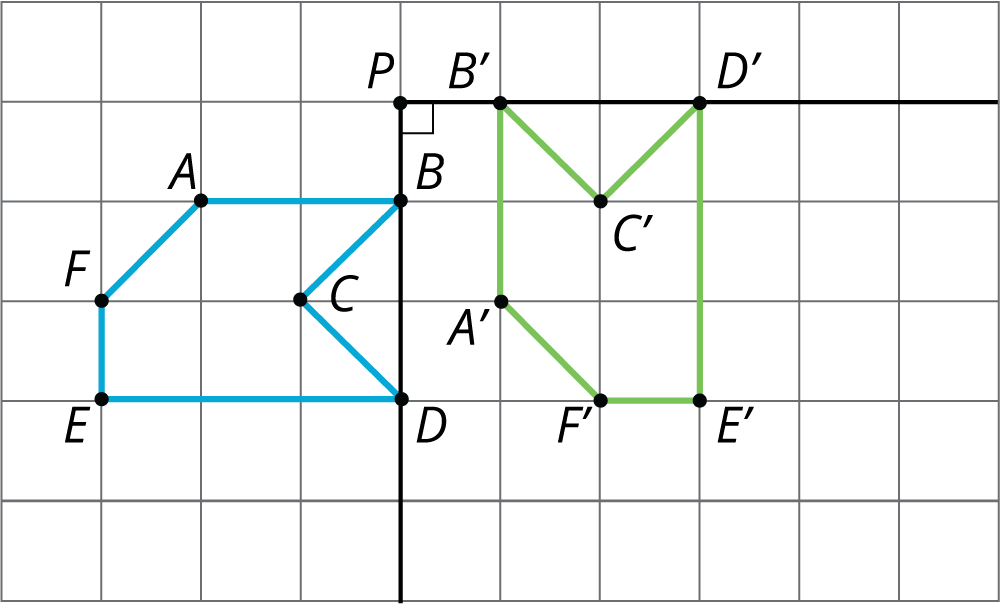
- A reflection can be described by a line of reflection (the “mirror”). Each point is reflected directly across the line so that it is just as far from the mirror line, but is on the opposite side.
For example, pentagon \(ABCDE\) is reflected across line \(m\).
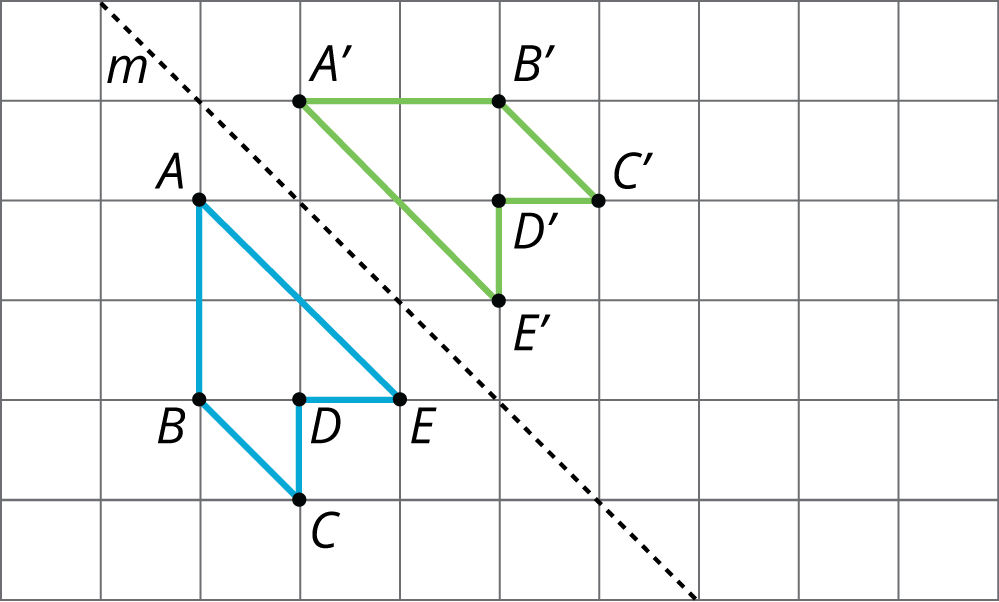
Glossary Entries
- clockwise
Clockwise means to turn in the same direction as the hands of a clock. The top turns to the right. This diagram shows Figure A turned clockwise to make Figure B.

- counterclockwise
Counterclockwise means to turn opposite of the way the hands of a clock turn. The top turns to the left.
This diagram shows Figure A turned counterclockwise to make Figure B.
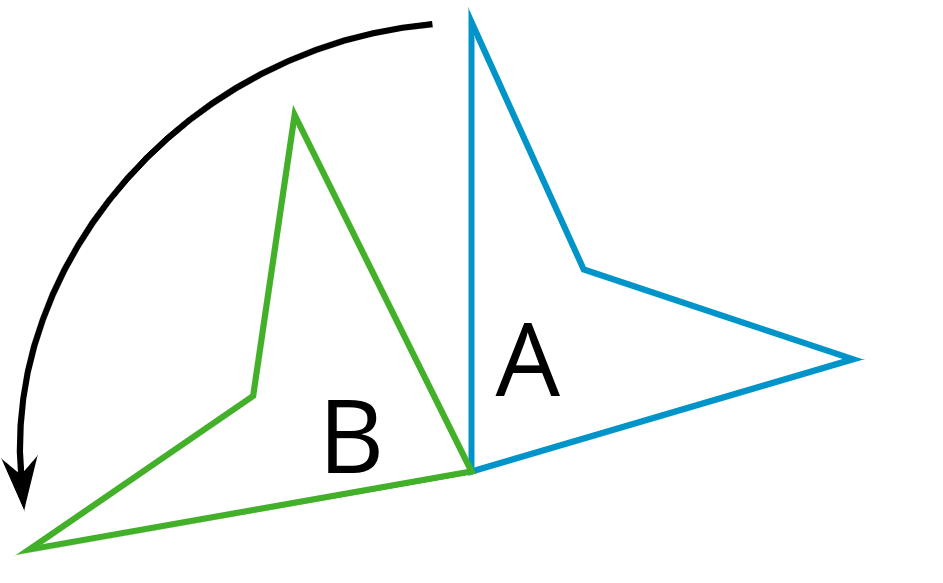
- image
An image is the result of translations, rotations, and reflections on an object. Every part of the original object moves in the same way to match up with a part of the image.
In this diagram, triangle \(ABC\) has been translated up and to the right to make triangle \(DEF\). Triangle \(DEF\) is the image of the original triangle \(ABC\).

- reflection
A reflection across a line moves every point on a figure to a point directly on the opposite side of the line. The new point is the same distance from the line as it was in the original figure.
This diagram shows a reflection of A over line \(\ell\) that makes the mirror image B.
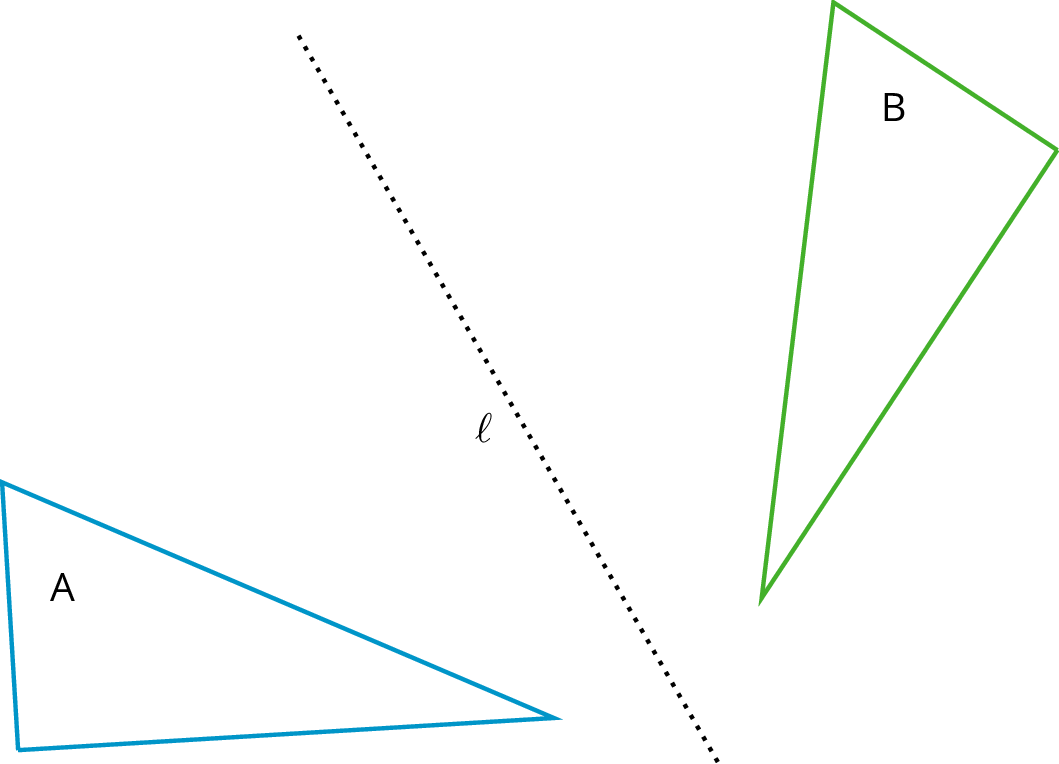
- rotation
A rotation moves every point on a figure around a center by a given angle in a specific direction.
This diagram shows Triangle A rotated around center \(O\) by 55 degrees clockwise to get Triangle B.
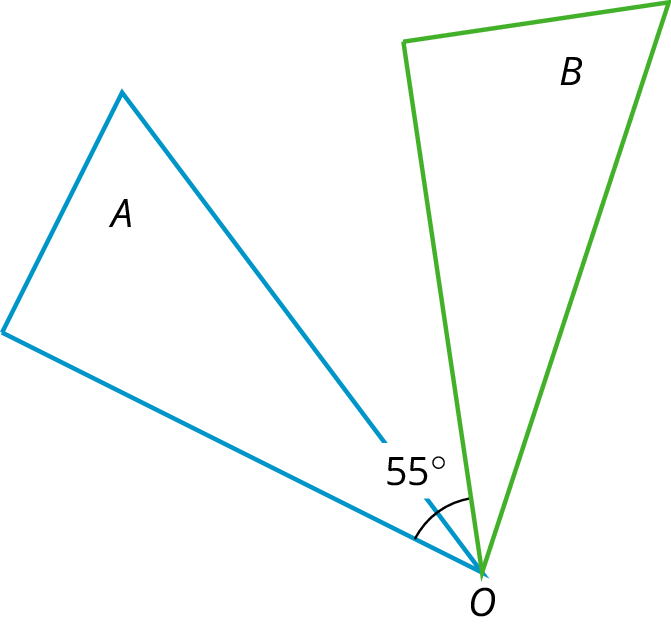
- sequence of transformations
A sequence of transformations is a set of translations, rotations, reflections, and dilations on a figure. The transformations are performed in a given order.
This diagram shows a sequence of transformations to move Figure A to Figure C.
First, A is translated to the right to make B. Next, B is reflected across line \(\ell\) to make C.

- transformation
A transformation is a translation, rotation, reflection, or dilation, or a combination of these.
- translation
A translation moves every point in a figure a given distance in a given direction.
This diagram shows a translation of Figure A to Figure B using the direction and distance given by the arrow.
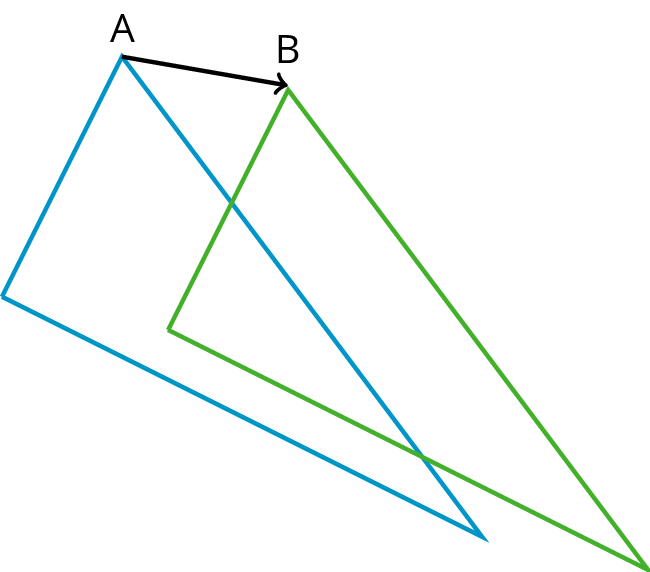
- vertex
A vertex is a point where two or more edges meet. When we have more than one vertex, we call them vertices.
The vertices in this polygon are labeled \(A\), \(B\), \(C\), \(D\), and \(E\).
